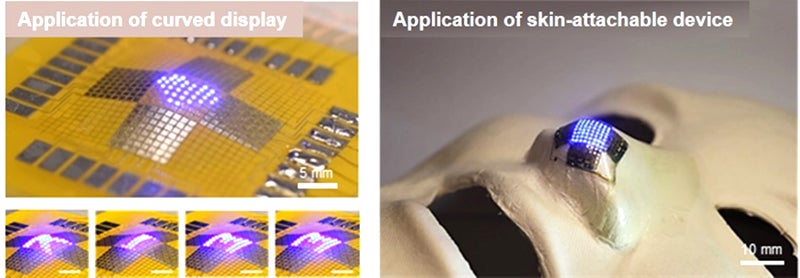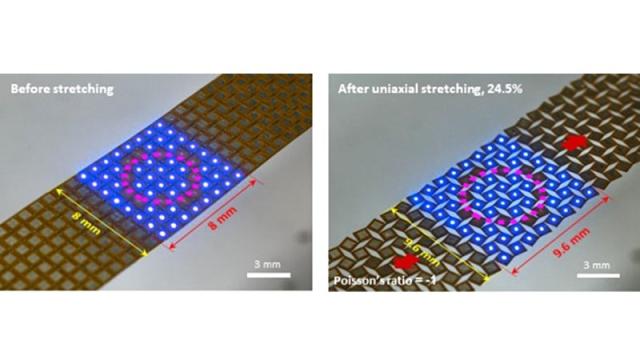Over-inflate a balloon with a cartoon character on it, and they’ll end up looking stretched and unfamiliar. But as low-tech as balloons are, this same issue also affects the next generation of flexible displays that could one day be used in wearable devices. Researchers in South Korea believe they’ve come up with a solution to this problem with a new “meta-display technology.”
Most materials that stretch — be it rubber, fabric, or anything exhibiting some level of elasticity — tend to contract in one direction when elongated in the other. Normally that’s not an issue: A stretchy pair of tights is still comfortable even when you have to squeeze into them, and Silly Putty is most fun when used to stretch images peeled off a comic book page. But there are times when stretching is problematic.
We’re still in the infancy of flexible display technologies, but they’ve already shown their exciting potential through devices like the Samsung Galaxy Z Fold 3 and Z Flip 3, which squeeze larger folding screens into pocket-friendly smartphones. One day, these displays could be as flexible (and durable) as the fabrics used to make clothing, except no one wants a touchscreen display sewn into the sleeve of their jacket that warps and distorts the on-screen images as they move their arm.

To overcome this fundamental problem with stretchable displays, researchers from the Korea Institute of Machinery and Materials turned to metamaterials, which are highly engineered materials often made up of smaller elements arranged in repeating patterns, that exhibit unique behaviours that naturally occurring materials do not.
In this case, the researchers created a metamaterial from the self-illuminating microLEDs that have promised to make TVs even thinner, lighter, and more energy efficient. The resulting meta-display features the individual microLED components strategically connected and hinged at the corners, so that when the prototype 3-inch screen is stretched in one direction, the same amount of stretching happens in the other direction, evenly increasing the small gaps between the microLEDs. This way, even as the on-screen image gets larger, its aspect ratio remains the same. A paper on this work is published in the journal Advanced Functional Materials.
The team found that their prototype is flexible enough to be stretched up to 25% before any visible distortion begins to occur. The research has a long way to go before you’ll be able to throw on a jacket covered in animated patterns (or, let’s face it, endless ads) but it brings us a step closer to display technologies that are far less fragile and delicate than what we’re accustomed to.
